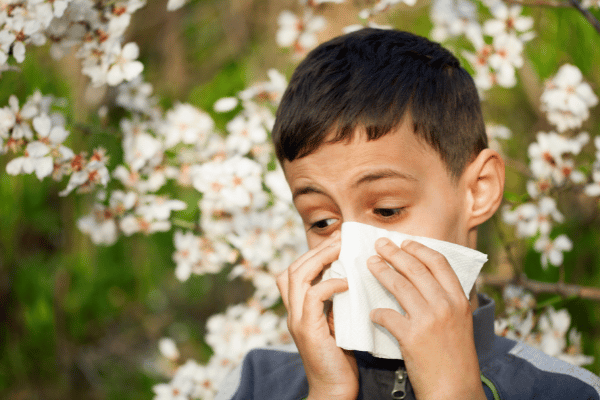It’s been known for quite some time now that Australia is the “food allergy capital of the world”.
One in 20 school-aged kids, it is believed, has food allergies.
And yet the National Allergy Strategy found recently, after reviewing school and childcare policies and guidelines, that an alarming 1 in 10 had no requirement for their staff to be trained in anaphylaxis management and prevention.
Anaphylaxis is the most severe form of allergic reaction, and the incidence of food-induced anaphylaxis in Australia has risen rapidly over the last decade.
Talking to Indian Link, National Allergy Strategy (NAS) Co-chair, and paediatric clinical immunology/allergy specialist Dr Preeti Joshi explained the need for an ‘allergy aware’ approach in schools and child care centres.

“We’ve launched a best practice guidelines for the prevention and management of anaphylaxis in schools and children’s education and care. This resource was produced by bringing together all the different consumers – parents, carers, teachers, people in different kinds of education institutions, childcare advocates, and healthcare professionals.”
The National Allergy Strategy has developed a new ‘Allergy Aware’ online hub for staff working in schools and CEC, providing free, evidence-based resources including an implementation guide, templates and sample documents, plus links to state and territory specific information.
Detailed plans are available for anaphylaxis management and procedures, including care plans and emergency response.
“Individual plans are recommended for each child at school with an allergy, which will look at their circumstances, and how to minimise their exposure to the allergen, with a written plan in place including for incident reporting. Everyone in that setting, not only the child’s teacher, would be trained in the prevention and management of anaphylaxis,” Dr Joshi detailed.

In addition to allergy documentation, plans have also been detailed to increase staff awareness and training in recognition, prevention, and treatment. Recommendations have also been made for the education of students and peers, vital in case an incident occurs when a teacher is not around.
“Children are capable of understanding a lot, by the age of three,” Dr Johi said. “Toddlers understand when you tell them don’t eat this food, or don’t accept food from others without checking with a parent or teacher beforehand. Education of our children can start really early.”
Training resources on the Allergy Aware online hub are regularly updated, and there would also be a provision for reporting incidents of anaphylaxis that have occurred.
NAS encourages parents, teachers, and staff working in childcare and education centre to browse the site.

Changes in dietary patterns, surrounding environment, and skin care are some of the reasons for the recent rise of allergies, according to Dr Preeti Joshi.
“We tend to have more processed foods in our diet now than whole foods, which probably changes the gut microbiota. We’ve got less exposure to things that used to be around, like animals for example. Farm animals used to add to the dirt to the surroundings we’d be exposed to. Our skin is also changing. The barriers aren’t as intact in some children, so allergens can get in through the skin. It’s unclear how the chemicals in our cleaning products might affect this pattern. We also know that low Vitamin D levels also impact allergies.”
Interestingly, Dr Joshi observed, anaphylaxis and allergy awareness might not be that widespread in the Indian community. Evidence has shown that kids born in India have high immunity, and therefore less predisposition to food allergies.
“I’ve found in my practice is that kids of Indian/Asian backgrounds born in India/Asian countries, have less food allergy and eczema than if they’re born here, where it’s far more common and more severe,” Dr Joshi remarked. “It’s really hard to explain why this happens – whether it’s got to do with specific genetics or the stimulation of different bacteria.”
READ ALSO: Healthy summer lunchbox for your child
Link up with us!
Indian Link News website: Save our website as a bookmark
Indian Link E-Newsletter: Subscribe to our weekly e-newsletter
Indian Link Newspaper: Click here to read our e-paper
Indian Link app: Download our app from Apple’s App Store or Google Play and subscribe to the alerts
Facebook: facebook.com/IndianLinkAustralia
Twitter: @indian_link
Instagram: @indianlink
LinkedIn: linkedin.com/IndianLinkMediaGroup




